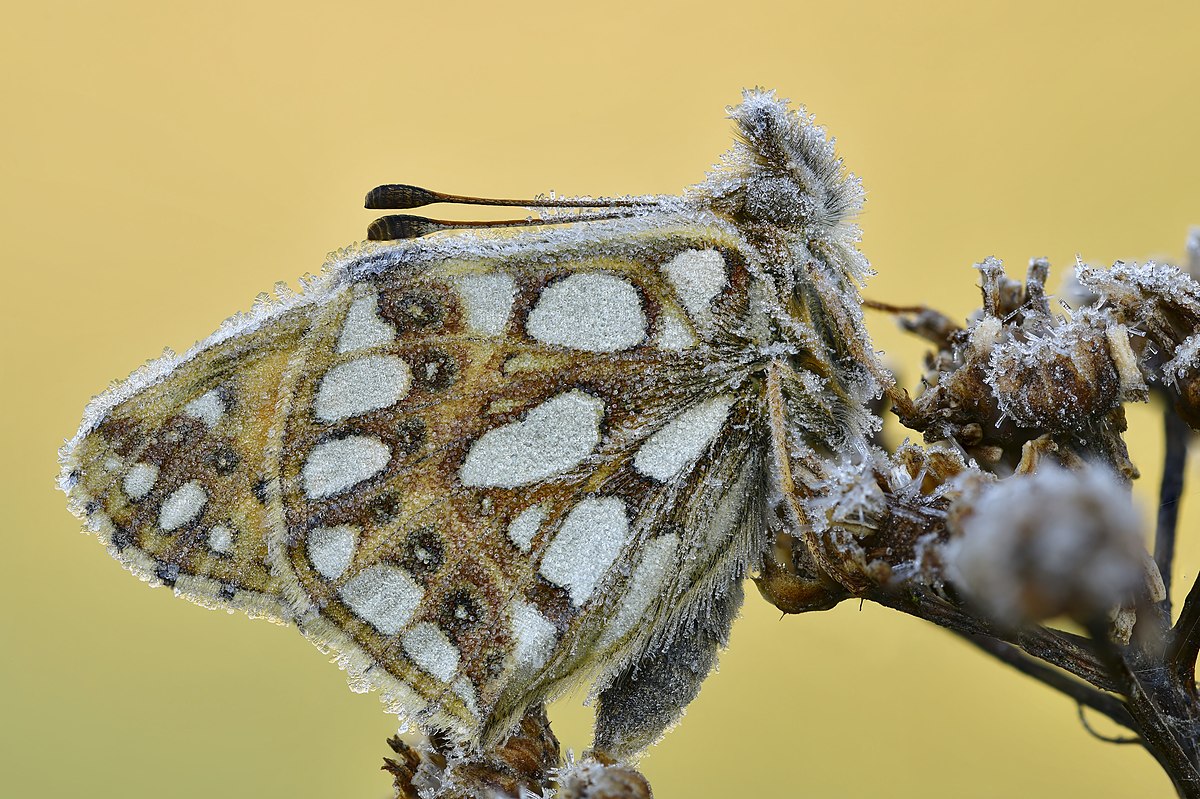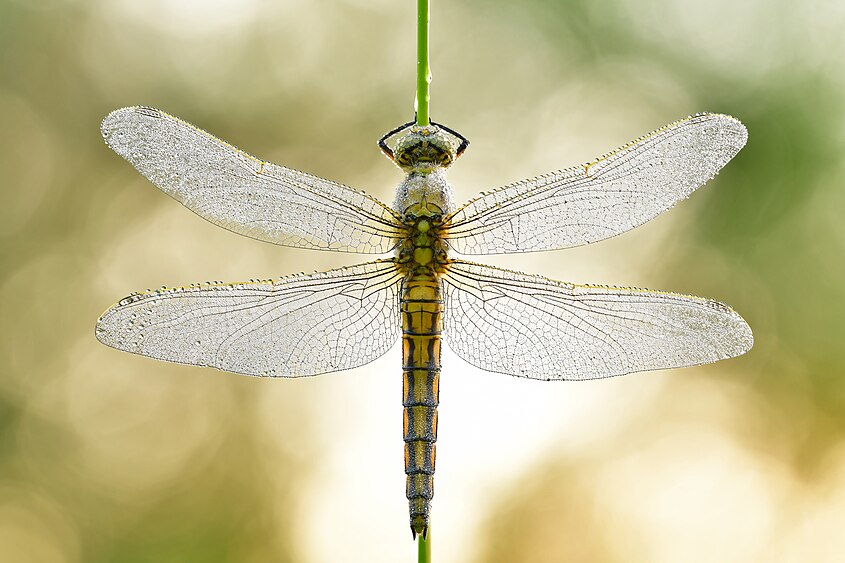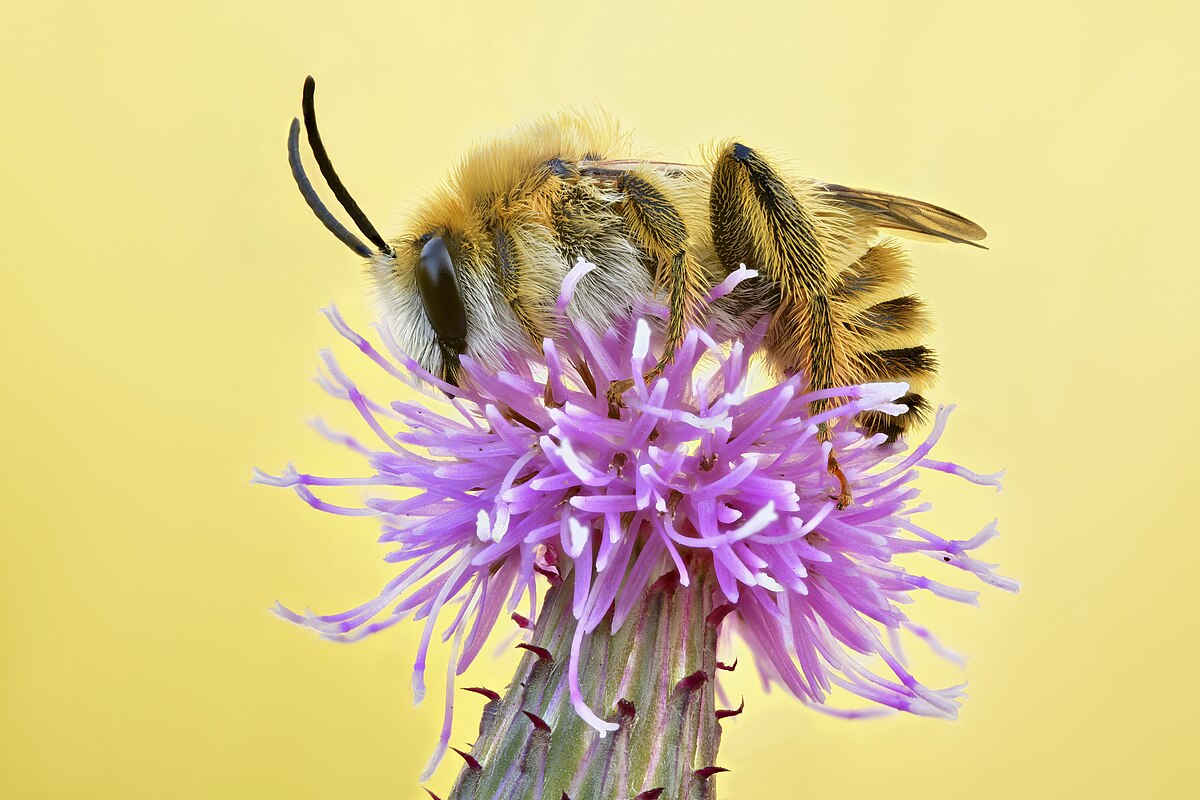Macro photography can brightly transmit the true beauty of exact species and their unique details. But despite its wonderful results, this type of photography also has its difficulties and requires a precise view, especially if its nature and the way of controlling everything around it are not that possible.
“You never really know what you’re going to find, so it’s always a coincidence.” – shared Sven Damerow.
We welcome you to read this interview and learn many interesting details about macro photography!
Sven Damerow is a German hobby nature photographer who specializes in macro shoots.
His images took the winning places in the local German and International parts of the Wiki Loves Earth photo contest several times: in 2023, in 2022, and 2019.

Author of the photo: Sven Damerow
How long is your journey as a photographer? Do you remember your first steps in professional photography and what inspired you to get started?
“I started photographing in 2006; at the beginning, I wanted to photograph landscapes because I had seen so many beautiful landscape photos on the internet, then I went to fields and meadows, and there I noticed the endless variety of insects, and I tried to photograph them. I quickly put the landscapes to one side and concentrated on the insects, which I still do today.”
What type of photography do you specialize in? What is your photographic style?
“Macro photography, for a long time, up to a scale of 1:1, for a few years now also a little closer with a scale of up to 5:1. For several years, I have been working with the focus stacking functions of my camera, which means taking several pictures of a subject where the focus always shifts slightly and in the end everything is sharp from front to back.
In my pictures, I try to keep everything as natural as possible, i.e., I don’t do any major editing, I only use natural light and no external light sources.”
What kind of equipment do you use? Can you explain your choice of camera, lenses, and other gear?
“I’ve been using Nikon cameras since the beginning, and over the years, I’ve used a total of 4 different cameras, which have allowed me to take better and better photos over time. I currently have the Nikon Z8 with a Sigma 150mm Macro lens for all pictures up to a scale of 1:1 and also a Laowa 25mm with a scale of 2:1 to 5:1.
I also always use a tripod with a macro sled and plant clamps to keep my subjects steady in windy conditions.”.
What software do you use for post-processing and editing? Can you describe your editing workflow?
“To edit the photos I use Photoshop and to add the stacks together ZereneStacker. In the beginning, I move the images from the camera to my computer and then I look through all the images individually to determine from to which images to go each individual stack. Then the images are automatically counted together and the finished image is created in its full sharpness. After that, I’ll just move the regulators for colors and so on a little bit. At the end, the picture will be exchanged and finished.”

Author of the photo: Sven Damerow
How do you usually choose the locations? What was your favorite one?
“I only have a few places where I take photos, I found them simply by looking for places where it is quiet and where there are as many species as possible. My two favorite places are the meadows on the Elbe dike near Rühstädt, especially for photographing butterflies, and Gülpe for dragonflies.”
What was your experience in picturing the protected areas? Is this term somehow changing the photography conditions? What do you advise starting from when picturing the protected areas?
“Of course, you should always move as carefully as possible in nature in order to cause as little damage as possible and this is of course especially true in nature reserves.”

Author of the photo: Sven Damerow
How did you first get involved in the Wiki Loves Earth International photo contest devoted to picturing natural heritage?
“In order to identify insects and find out something about them, I often go to Wikipedia and then one day I saw the WLE competition in Germany above an article and I thought it perfect because I already take photos in nature reserves and took part. Of course, I’ll be there again this year.”
The previous year (and not only), your images took winning places in the main nomination in the local German and International Wiki Loves Earth. Did you aim to win, and what was your reaction?
“Who doesn’t want to win? I was of course really happy that it’s worked out several times now. Given the many photos submitted, it is of course an honor.”
Two of your winning images represent beautiful species of insects, which are showcased very precisely. Is this a “catching the right moment” skill?
“Since I’m always out in the meadows at sunrise, is it not hard to catch the right moment because the insects can’t escape after the night and the cold of the morning.”

Author of the photo: Sven Damerow
Author of the photo: Sven Damerow
What is the most important and the hardest part of taking macro and close-up images?
“Insects are very small, so it is important to always work very precisely. The main difficulty in macro photography is the wind, but you can’t really influence it.”
Can you share some of your favorite projects that you are proud of or photographs you’ve taken? What makes them special to you?
“For example, the gold wasp I found one morning. I had talked to another photographer the day before about the fact that I had never seen this beautiful insect before and then the next day I did. It’s very small and I tried to photograph it on as large a scale as possible, which only worked with manual focus shifting and I ended up with a great photo.”
What influences or inspires your work? And what is the most rewarding part of being a professional photographer for you?
“Nature with its infinite variety of insect species, you always find new species that you have never seen or photographed before.”

Author of the photo: Sven Damerow
We wish you wonderful shoots and unique uploads for the Wiki Loves Earth!
![]() The Heritage Guard Network team is working to collect information and build a community of experts and organizations focused on the preservation of natural and cultural heritage under threat.
The Heritage Guard Network team is working to collect information and build a community of experts and organizations focused on the preservation of natural and cultural heritage under threat.![]() We encourage you to contribute to the initiative with your experience by filling out one (or more) surveys by September 1st:
We encourage you to contribute to the initiative with your experience by filling out one (or more) surveys by September 1st:![]() If you are an expert in the field of natural heritage, please fill out this form: https://bit.ly/4e0mjza
If you are an expert in the field of natural heritage, please fill out this form: https://bit.ly/4e0mjza![]() If you are an expert in the field of cultural heritage, please, fill out this form: https://bit.ly/3ACxWOm
If you are an expert in the field of cultural heritage, please, fill out this form: https://bit.ly/3ACxWOm![]() If you have ever participated in the Wiki Loves Earth and/or Wiki Loves Monuments photo contests or just have experience in photographing natural protected areas and/or cultural heritage and have faced some risks, please fill out this form: https://bit.ly/4c3eyqv
If you have ever participated in the Wiki Loves Earth and/or Wiki Loves Monuments photo contests or just have experience in photographing natural protected areas and/or cultural heritage and have faced some risks, please fill out this form: https://bit.ly/4c3eyqv






